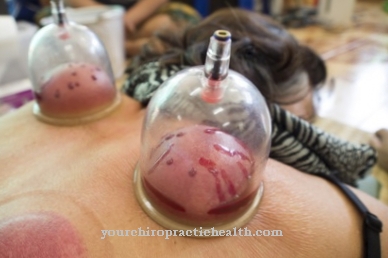As Traumatology (Trauma medicine) refers to the science of wounds or injuries and their therapy.
What is the traumatology?

Traumatology deals with the treatment of small and large injuries but also with the treatment of multiple trauma.
This means the occurrence of several injuries in different parts of the body, at least one of which is life-threatening.
In addition, traumatology also plays a not insignificant role in forensic medicine offenses involving bodily harm or in industrial accidents.
Treatments & therapies
The word "trauma" comes from the Greek and means something like "injury" or "wound". The term refers to both the damaging impact (for example a shock or an accident) and the damage caused by the accident (for example a flesh wound or a broken bone). Traumatology therefore deals with the occurrence, prevention and treatment of injuries, but is only limited to physical injuries.
Doctors who specialize in this field are therefore referred to as specialists in orthopedics and trauma surgery. Accident physicians must provide first aid at the scene of the accident; they are also responsible for shock treatment and surgical care. In such situations, quick action is required: the doctor must be able to assess whether the person concerned is at risk, what needs to be done first and where the injured person will be transported. Patients suffering from a so-called multiple trauma, that is, multiple injuries that exist in different regions of the body, are particularly at risk.
A multiple trauma can be caused, for example, by a car accident, which can lead to life-threatening complications. That requires a team with a lot of experience, with mainly doctors from several disciplines working together. The care of patients in the emergency room also makes high demands, whereby there are usually permanent teams of at least three doctors. A shock room team is mainly used in the case of an unstable thorax, open skull injuries, breathing disorders, burns, amputation injuries or fractures of more than two bones.
First of all, it is important to avert an acute threat, then the patients are subsequently cared for in the intensive care unit. This is often followed by a transfer to a special clinic, whereby rehabilitation over several weeks or months is necessary, especially in the case of multiple injuries. In addition, those affected often have to be provided with aids or prostheses or need psychological support.
Diagnosis & examination methods
An examination therefore always covers the entire person or the injuries they have suffered and also includes any previous illnesses. In the case of people with minor injuries, the doctor restricts himself to what is necessary for a diagnosis and appropriate therapy. At the scene of the accident, the state of consciousness, the circulatory system and breathing are checked, and the pelvis, extremities and spine are also examined.
In the event of injuries to the extremities, blood circulation, sensitivity and motor skills in particular are checked. A blood sample for subsequent laboratory tests and tetanus prophylaxis is also recommended as an accompanying measure. In the case of seriously injured persons, ensuring vital functions and any necessary surgical measures are carried out in parallel, with the assessment of vital functions taking place according to the so-called ATLS protocol.
The second to fourth day after the trauma suffered represent a very unstable phase in which no extensive operations should be carried out. In order to be able to guarantee comprehensive diagnostics and subsequent rehabilitation, there is a wide range of imaging diagnostic procedures in the clinics. These include:
- Recto-proctoscopy: An endoscopic procedure that can be used to examine the rectum (rectum). It is both a diagnostic and a treatment procedure
- Rectosigmoidoscopy: An endoscopic procedure used to examine the rectum
- Colonoscopy: Computed tomography of the large intestine
- Esophago gastroscopy: Endoscopic examination of the duodenum, stomach and esophagus
- Echocardiography: examination of the heart with the help of ultrasound
- Sonography of soft tissues and joints
- Sonography of the thyroid, chest, and abdomen
- Sonography of blood vessels
In addition, it is also possible to perform a skeletal scintigraphy (imaging nuclear medicine procedure to examine the skeleton), an angiography (diagnostic imaging procedure to display blood vessels), a phlebography (examination of the arm or leg veins with the help of contrast media) or an MRI (magnetic resonance tomography) ).
If the thorax is unstable, a spiral CT with contrast agent and a three-channel ECG are also performed in the emergency room. If the injured suffer from a traumatic brain injury, the motor skills, pupil function and state of consciousness are repeatedly documented, and unconscious patients are often intubated with adequate ventilation. In addition, it is necessary to rule out a life-threatening pelvic injury or to examine the stability of the pelvis. In this context, a computed tomography or a pelvic survey is often performed. We also look for external injuries or hematomas in the area of the abdomen and flank.
The anamnesis of the spine is also very important. If there is a spinal injury, this is clarified with the help of an imaging procedure after the circulation has stabilized. Possible fractures are determined using suitable radiological procedures; the basic diagnosis also includes the clinical assessment of the hand. In this case, if a hand injury is suspected, an X-ray examination is performed for diagnosis. If there is a vascular injury, the doctor in charge performs duplex or Doppler sonography.













.jpg)

.jpg)
.jpg)











.jpg)